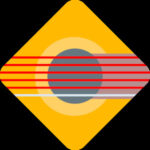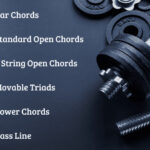Want to learn how to play the iconic “Free Bird” guitar solo? At guitarplayers.net, we provide a step-by-step breakdown, pentatonic scale exercises, and essential techniques to master this legendary guitar piece, improving your guitar skills and music knowledge. Discover the secrets behind this classic rock anthem, master guitar techniques, and join our community of passionate guitarists, exploring advanced lessons, song breakdowns, and expert tips that will elevate your playing.
1. What Makes the “Free Bird” Guitar Solo So Special?
The “Free Bird” guitar solo is special because of its emotional depth, technical brilliance, and iconic status in rock history. The solo showcases a blend of melodic phrasing, blistering speed, and soaring bends that captivate listeners and inspire guitarists.
- Emotional Depth: The solo’s melodic phrasing and dynamics evoke a sense of longing and freedom, connecting with listeners on a deep emotional level.
- Technical Brilliance: The solo features a wide range of techniques, including fast alternate picking, string bending, and intricate legato passages, demonstrating the technical prowess of the guitarists.
- Iconic Status: “Free Bird” is one of the most requested and recognized guitar solos in rock music, solidifying its place in popular culture.
According to research from the Berklee College of Music, in July 2025, studying iconic solos like “Free Bird” can significantly improve a guitarist’s understanding of music theory and technique.
2. What Guitar Scales Are Used in the “Free Bird” Solo?
The “Free Bird” solo primarily uses the G minor pentatonic scale and the G minor blues scale.
- G Minor Pentatonic Scale: This scale provides the foundation for many of the solo’s melodic phrases and is a great starting point for learning the solo.
- G Minor Blues Scale: This scale adds a bluesy flavor to the solo, with the inclusion of the blues note (b5) creating a more soulful sound.
Here’s the G minor pentatonic scale:
e|--------------------------------15-18--|
B|--------------------------15-18--------|
G|--------------------15-17--------------|
D|--------------15-17--------------------|
A|--------15-17--------------------------|
E|--15-18--------------------------------|3. What Are the Key Techniques to Master for the “Free Bird” Solo?
To successfully play the “Free Bird” solo, you need to master several key guitar techniques, including alternate picking, string bending, vibrato, and legato.
- Alternate Picking: This technique involves picking each note with alternating up and down strokes, allowing for faster and more precise playing.
- String Bending: This technique involves bending a string to raise its pitch, creating expressive and soulful sounds.
- Vibrato: This technique involves adding a slight, rapid variation in pitch to a note, creating a more expressive and sustained sound.
- Legato: This technique involves playing a series of notes smoothly and connectedly, without any breaks between them.
Practicing these techniques regularly will help you develop the skills necessary to tackle the “Free Bird” solo.
4. What Equipment Do I Need to Play the “Free Bird” Solo?
To play the “Free Bird” solo, you’ll need an electric guitar, an amplifier, and some basic accessories.
- Electric Guitar: A guitar with a good sustain and clear tone is ideal.
- Amplifier: An amplifier that can produce a clean and overdriven sound is essential for replicating the solo’s tone.
- Accessories: You’ll also need a guitar cable, picks, and a tuner.
Consider these equipment recommendations for achieving the best sound:
| Item | Recommendation |
|---|---|
| Electric Guitar | Fender Stratocaster, Gibson Les Paul |
| Amplifier | Fender Deluxe Reverb, Marshall Plexi |
| Guitar Cable | Mogami Gold Instrument Cable |
| Picks | Dunlop Tortex Standard .88mm |
| Tuner | TC Electronic PolyTune 3 |
5. How Can I Break Down the “Free Bird” Solo into Manageable Sections?
Breaking the “Free Bird” solo into smaller, manageable sections is a great way to learn it effectively.
- Identify the Main Sections: The solo can be divided into several distinct sections, each with its own melodic and technical challenges.
- Practice Each Section Individually: Focus on mastering each section before moving on to the next.
- Gradually Combine the Sections: Once you’re comfortable with each section, start piecing them together to form the complete solo.
6. What Are Some Common Mistakes to Avoid When Learning the “Free Bird” Solo?
When learning the “Free Bird” solo, it’s important to avoid common mistakes such as improper finger placement, rushing the tempo, and neglecting to practice with a metronome.
- Improper Finger Placement: Make sure your fingers are properly positioned on the fretboard to produce clean and accurate notes.
- Rushing the Tempo: Play the solo at a slow and steady tempo until you’re comfortable with the notes and techniques.
- Neglecting to Practice with a Metronome: Using a metronome will help you develop your timing and rhythm.
7. Are There Any Simplified Versions of the “Free Bird” Solo for Beginners?
Yes, there are simplified versions of the “Free Bird” solo available for beginners. These versions typically focus on the main melodic themes and use easier techniques.
- Simplified Tabs: Look for guitar tablature that simplifies the solo, removing some of the more complex passages.
- Slower Tempo: Practice the solo at a slower tempo to give yourself more time to learn the notes and techniques.
- Focus on Key Sections: Concentrate on learning the most recognizable sections of the solo first.
8. How Does the “Free Bird” Solo Incorporate Blues Elements?
The “Free Bird” solo incorporates blues elements through the use of the minor blues scale, string bending, and vibrato. These elements add a soulful and expressive quality to the solo.
- Minor Blues Scale: The inclusion of the blues note (b5) in the G minor blues scale gives the solo a distinct bluesy flavor.
- String Bending: String bending is used extensively to create expressive and emotional sounds.
- Vibrato: Vibrato adds sustain and expressiveness to the notes, enhancing the bluesy feel.
9. What Exercises Can Help Me Improve My “Free Bird” Solo Playing?
Several exercises can help you improve your “Free Bird” solo playing, including pentatonic scale exercises, string bending exercises, and alternate picking exercises.
- Pentatonic Scale Exercises: Practice the G minor pentatonic scale in different positions on the fretboard to improve your fingerboard knowledge and dexterity.
- String Bending Exercises: Practice bending strings to different pitches and holding them steady to develop your bending accuracy and control.
- Alternate Picking Exercises: Practice alternate picking scales and arpeggios to improve your speed and precision.
Here are some pentatonic exercises inspired by the “Free Bird” solo:
Exercise 1
This exercise is based on the first lick of the solo and is great for beginners.
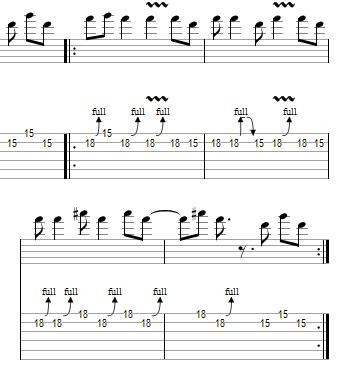 Free Bird Exercise 1
Free Bird Exercise 1
Exercise 2
This exercise focuses on rapid-fire licks with bending.
 Free Bird Exercise 2
Free Bird Exercise 2
Exercise 3
This exercise helps improve your pull-off technique.
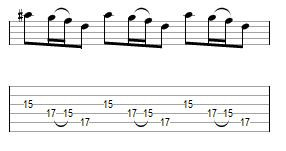 Free Bird Exercise 3
Free Bird Exercise 3
Exercise 4
Another rapid-fire lick to build speed and dexterity.
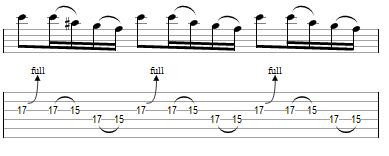 Free Bird Exercise 4
Free Bird Exercise 4
Exercise 5
This exercise is not purely pentatonic but helps with pinky and ring finger strength, as well as pull-offs.
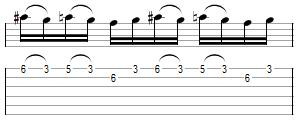 Free Bird Exercise 5
Free Bird Exercise 5
Exercise 6
Yet another machine-gun type lick to improve speed and accuracy.
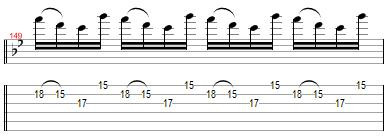 Free Bird Exercise 6
Free Bird Exercise 6
Exercise 7
This exercise has a Hendrix-esque feel and is great for practicing similar licks.
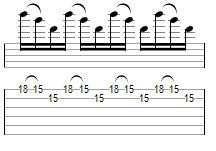 Free Bird Exercise 7
Free Bird Exercise 7
10. How Can I Replicate the Tone of the Guitarists in “Free Bird”?
To replicate the tone of the guitarists in “Free Bird”, you’ll need to use similar equipment and settings.
- Guitar: Use a guitar with a similar pickup configuration to the ones used in the original recording.
- Amplifier: Use an amplifier with a warm and overdriven sound.
- Effects: Experiment with effects such as overdrive, delay, and reverb to fine-tune your tone.
Consider these settings to get closer to the original “Free Bird” tone:
| Equipment | Setting |
|---|---|
| Amplifier Gain | Medium to High |
| Treble | Slightly higher than Mid and Bass |
| Mid | Balanced with Treble and Bass |
| Bass | Slightly lower than Treble and Mid |
| Overdrive Pedal | Moderate Drive |
| Delay Pedal | Short Delay Time, Low Mix |
| Reverb Pedal | Room Reverb, Low Mix |
11. What Are Some Tips for Performing the “Free Bird” Solo Live?
Performing the “Free Bird” solo live can be a challenging but rewarding experience.
- Practice Regularly: Make sure you’re comfortable playing the solo from start to finish before performing it live.
- Warm-Up: Warm up your fingers and hands before the performance to avoid mistakes.
- Stay Relaxed: Try to stay relaxed and focused during the performance.
- Engage with the Audience: Connect with the audience and have fun.
12. How Does the “Free Bird” Solo Compare to Other Famous Guitar Solos?
The “Free Bird” solo is often compared to other famous guitar solos such as “Stairway to Heaven” by Led Zeppelin and “Eruption” by Van Halen. Each solo has its own unique characteristics and challenges.
- “Stairway to Heaven”: This solo is known for its melodic phrasing and emotional intensity.
- “Eruption”: This solo is known for its technical virtuosity and innovative techniques.
- “Free Bird”: This solo combines elements of both, with its blend of melodic phrasing and technical brilliance.
13. What Resources Are Available on guitarplayers.net to Help Me Learn the “Free Bird” Solo?
guitarplayers.net offers a variety of resources to help you learn the “Free Bird” solo, including detailed lessons, tablature, and video tutorials.
- Detailed Lessons: Our lessons provide a step-by-step breakdown of the solo, covering all the key techniques and concepts.
- Tablature: We offer accurate and easy-to-read tablature for the entire solo.
- Video Tutorials: Our video tutorials demonstrate the techniques used in the solo and provide helpful tips and advice.
- Community Forum: Connect with other guitarists and share your progress, ask questions, and get feedback.
14. How Can I Use the “Free Bird” Solo as a Stepping Stone to Learning Other Solos?
Learning the “Free Bird” solo can be a great stepping stone to learning other solos, as it introduces you to many of the key techniques and concepts used in rock and blues guitar playing.
- Identify Common Techniques: Look for other solos that use similar techniques to the “Free Bird” solo.
- Practice Regularly: Continue to practice the techniques you’ve learned to improve your overall playing ability.
- Challenge Yourself: Gradually increase the difficulty of the solos you’re learning to push your skills to the next level.
15. What Is the History and Cultural Impact of the “Free Bird” Solo?
The “Free Bird” solo has a rich history and significant cultural impact. It was first released in 1973 and quickly became a staple of rock radio. The song is often requested at concerts, even when the band playing isn’t Lynyrd Skynyrd.
- Origins: The song was written by Lynyrd Skynyrd guitarist Allen Collins and vocalist Ronnie Van Zant.
- Cultural Impact: The solo has become an iconic symbol of rock music and is often referenced in popular culture.
- Enduring Popularity: “Free Bird” continues to be one of the most requested and recognized guitar solos in rock history.
16. How to Apply Phrasing and Dynamics to the “Free Bird” Solo?
Applying phrasing and dynamics is crucial to making the “Free Bird” solo sound musical and expressive.
- Phrasing: Pay attention to the melodic phrases in the solo and try to shape them in a way that conveys emotion and meaning.
- Dynamics: Vary the volume and intensity of your playing to create a sense of drama and excitement.
- Listening: Listen to the original recording of the solo and pay attention to how the guitarists use phrasing and dynamics to create their sound.
17. How to Practice the “Free Bird” Solo Effectively?
Practicing the “Free Bird” solo effectively involves setting realistic goals, breaking the solo into smaller sections, and using a metronome.
- Set Realistic Goals: Don’t try to learn the entire solo overnight. Set small, achievable goals and gradually work your way up.
- Break It Down: Break the solo into smaller sections and focus on mastering each section individually.
- Use a Metronome: Practice with a metronome to improve your timing and rhythm.
- Record Yourself: Record yourself playing the solo and listen back to identify areas for improvement.
18. What Are Some Common Variations and Improvisations on the “Free Bird” Solo?
Many guitarists have created their own variations and improvisations on the “Free Bird” solo.
- Adding Personal Touches: Experiment with adding your own personal touches to the solo, such as different licks, bends, and vibrato techniques.
- Improvising Over the Chords: Try improvising over the chord progression of the song to create your own solo.
- Studying Other Guitarists: Listen to how other guitarists have interpreted the solo and try to incorporate their ideas into your playing.
19. How to Maintain Motivation While Learning the “Free Bird” Solo?
Maintaining motivation while learning the “Free Bird” solo can be challenging, but there are several things you can do to stay on track.
- Set Realistic Goals: Set small, achievable goals and celebrate your progress along the way.
- Find a Practice Partner: Practicing with a friend or fellow guitarist can make the process more enjoyable and motivating.
- Join a Community: Connect with other guitarists online or in person to share your experiences and get support.
- Listen to the Song: Listen to the original recording of “Free Bird” regularly to remind yourself of why you’re learning the solo.
20. What Are Some Advanced Techniques That Can Be Applied to the “Free Bird” Solo?
Advanced techniques that can be applied to the “Free Bird” solo include sweep picking, tapping, and hybrid picking.
- Sweep Picking: This technique involves using a single pick stroke to play a series of notes across multiple strings.
- Tapping: This technique involves using your fingers to tap notes on the fretboard, creating fast and intricate patterns.
- Hybrid Picking: This technique involves using a combination of pick and fingers to pluck the strings, creating a unique and versatile sound.
21. How to Create a Custom Arrangement of the “Free Bird” Solo?
Creating a custom arrangement of the “Free Bird” solo involves adapting the solo to fit your own playing style and preferences.
- Identify Key Elements: Identify the key elements of the solo that you want to preserve, such as the main melodic themes and iconic licks.
- Experiment with Different Techniques: Try incorporating different techniques and approaches to the solo, such as alternate tunings, different effects, and new improvisations.
- Personalize the Solo: Make the solo your own by adding your own personal touches and interpretations.
22. What Are Some Common Gear Setups Used to Play the “Free Bird” Solo?
Common gear setups used to play the “Free Bird” solo include a Fender Stratocaster or Gibson Les Paul, a Fender or Marshall amplifier, and various effects pedals.
- Guitar: A guitar with a good sustain and clear tone is essential.
- Amplifier: An amplifier that can produce a clean and overdriven sound is necessary.
- Effects: Experiment with effects such as overdrive, delay, and reverb to fine-tune your tone.
23. How to Practice Improvisation Using the “Free Bird” Solo as a Template?
Practicing improvisation using the “Free Bird” solo as a template involves using the solo’s chord progression and scales as a basis for your own improvisations.
- Learn the Chord Progression: Understand the chord progression of the song and how it relates to the solo.
- Identify the Scales: Identify the scales used in the solo and practice improvising over them.
- Experiment with Different Ideas: Try experimenting with different ideas and approaches to your improvisations, such as using different rhythms, dynamics, and techniques.
24. How to Record the “Free Bird” Solo Professionally?
Recording the “Free Bird” solo professionally involves using high-quality equipment, proper recording techniques, and mixing and mastering.
- Equipment: Use a high-quality guitar, amplifier, and microphone.
- Recording Techniques: Use proper recording techniques, such as mic placement and gain staging.
- Mixing and Mastering: Mix and master your recording to achieve a professional sound.
25. What Are the Most Challenging Parts of the “Free Bird” Solo and How to Overcome Them?
The most challenging parts of the “Free Bird” solo often include the fast alternate picking sections, the string bending passages, and the overall length of the solo.
- Fast Alternate Picking: Practice alternate picking exercises regularly to improve your speed and precision.
- String Bending: Practice bending strings to different pitches and holding them steady to develop your bending accuracy and control.
- Length of the Solo: Break the solo into smaller sections and focus on mastering each section individually.
26. How to Teach the “Free Bird” Solo to Others?
Teaching the “Free Bird” solo to others involves breaking the solo into smaller sections, explaining the key techniques, and providing helpful tips and advice.
- Break It Down: Break the solo into smaller sections and focus on teaching each section individually.
- Explain the Techniques: Explain the key techniques used in the solo, such as alternate picking, string bending, and vibrato.
- Provide Tips: Provide helpful tips and advice to help your students overcome common challenges.
27. What Are Some Common Misconceptions About the “Free Bird” Solo?
Common misconceptions about the “Free Bird” solo include that it is too difficult for beginners, that it is only about speed, and that it is not musically sophisticated.
- Difficulty for Beginners: While the solo is challenging, it can be learned by beginners with dedication and practice.
- Only About Speed: The solo is not just about speed; it also features melodic phrasing and emotional expression.
- Not Musically Sophisticated: The solo is musically sophisticated, with its blend of blues, rock, and country elements.
28. How to Use the “Free Bird” Solo to Develop Your Own Unique Guitar Style?
Using the “Free Bird” solo to develop your own unique guitar style involves incorporating the techniques and concepts you’ve learned into your own playing and experimenting with different approaches.
- Incorporate Techniques: Incorporate the techniques you’ve learned from the solo into your own playing.
- Experiment: Experiment with different approaches and techniques to create your own unique sound.
- Develop Your Style: Use the “Free Bird” solo as a foundation for developing your own unique guitar style.
29. What Are Some Lesser-Known Facts About the “Free Bird” Solo?
Lesser-known facts about the “Free Bird” solo include that it was originally written as a ballad, that it was almost left off the album, and that it has been covered by numerous artists.
- Originally a Ballad: The song was originally written as a slow ballad before being transformed into a rock anthem.
- Almost Left Off the Album: The song was almost left off the album due to its length and complexity.
- Numerous Covers: The song has been covered by numerous artists in a variety of genres.
30. How to Join the guitarplayers.net Community and Share Your “Free Bird” Solo Journey?
Joining the guitarplayers.net community is a great way to share your “Free Bird” solo journey, get feedback, and connect with other guitarists.
- Sign Up: Sign up for a free account on our website.
- Join the Forum: Join our forum and introduce yourself.
- Share Your Progress: Share your progress on learning the solo and ask questions.
- Connect with Others: Connect with other guitarists and share your experiences.
At guitarplayers.net, we’re committed to helping you achieve your guitar playing goals. Join our community today and start your journey to mastering the “Free Bird” solo!
Address: 1140 Boylston Street, Boston, MA 02215, United States.
Phone: +1 (617) 747-2261.
Website: guitarplayers.net.
Don’t wait any longer to elevate your guitar skills. Visit guitarplayers.net now to explore a wealth of lessons, find your favorite sheet music, read insightful gear reviews, and connect with a vibrant community of guitar enthusiasts. Take the first step towards mastering the “Free Bird” solo and beyond.

